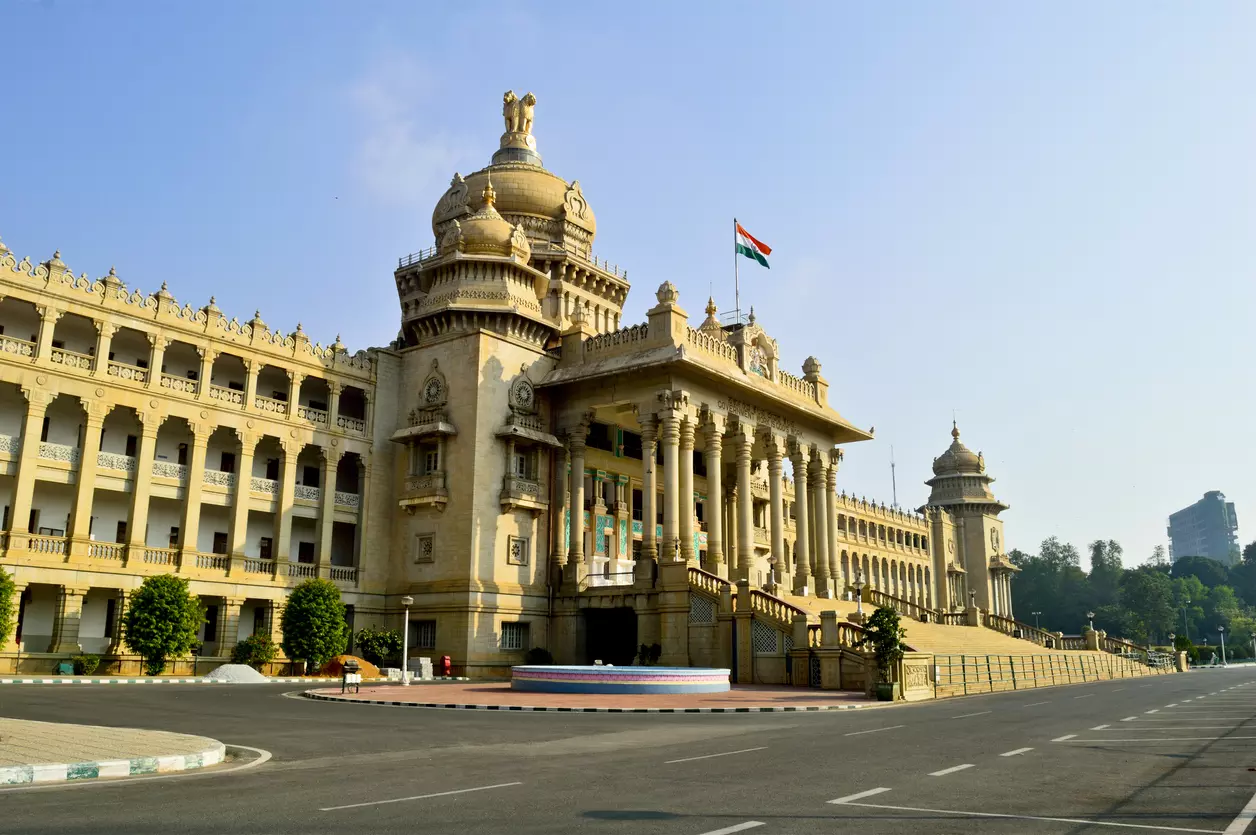
With Karnataka set for golden jubilee, here’s a peek into its glorious past
While Urs transformed Mysore state into Karnataka, the land of Kannada-speaking people was referred to as Karnataka some six centuries ago, say historians

“Kavariyinda Godavari Varamirda Nadada Kannadadol” — the extent of the Kannada state was from the rivers Cauvery to Godavari, wrote Rashtrakuta king Amoghavarsha Nrupatunga in Kavirajamarga (850 CE), the earliest available work on poetics and grammar in Kannada language. That is how Nrupatunga, who was also a poet, defined the geographical location of Kannada land centuries ago.
In modern times, it was 67 years ago, on November 1, 1956, that Kannada-speaking people, who were spread across southern India, were brought under one state. The region that constitutes Karnataka today was then split into 20 administrative regions under the princely state of Mysore, the Nizam’s Hyderabad, Bombay Presidency, Madras Presidency, and the territory of Kodagu.
For the past 66 years, the Karnataka government has celebrated Kannada Rajyotsava on November 1 to mark the transformation of Mysore presidency into a Kannada state following the reorganisation of states on a linguistic basis in 1956. Mysore was renamed Karnataka by the then Congress government headed by D Devaraj Urs on November 1, 1973.
A six-century-old identity
While Urs has the credit of transforming Mysore state into Karnataka, the land of Kannada-speaking people was referred to as Karnataka some six centuries ago, according to historians, epigraphists, and iconographists. They argue that the entire southern India was united under one umbrella region, which was called Karnataka. They assert their stand with empirical evidence that what is referred to as the Vijayanagara empire was actually called Karnataka Samrajya (Karnataka empire) and Vijayanagara was only its capital.
Renowned historian and epigraphist Vasundhara Filliozat’s study says: “What colonial historians referred to as Vijayanagara empire, was actually being called Karnataka Samrajya”. At the same time, inscriptions found in the region testify that the Karnataka empire was founded in 1336. Renowned scholar and saint Vidyateertha, teacher of Vidyaranya, was apparently instrumental in founding this Karnataka empire.
A century-old movement
In modern times, there was a century-old demand for the unification of Karnataka as a linguistic state. The movement for the unification gained momentum as Kannada Ekikarana Chaluvali (Kannada Unification Movement) with the founding of Karnataka Vidyavardhaka Sangha in Dharwad in 1890.
The movement gained significance with poet Aluru Venkata Rayaru, who is popularly known as Kannadada Kulapurohita (chief priest of Kannada), leading the movement from the front. A resolution was passed demanding the unification of Kannada-speaking areas at the Karnataka State Political Conference held at Dharwad in 1920. “Udayavagali Namma Cheluva Kannada Nadu” by Huilgol Narayana Rayaru became the first state anthem in 1924.
Finally, Mysore state, comprising Kannada-speaking territories, came into existence on November 1, 1956. However, Kannadigas were somewhat disappointed as their dream of the inclusion of a few Kannada-speaking parts, especially Kasargod, werewas not realised.
Kannada-speaking regions that were united in 1956 under the Mysore state formally got the name of Karnataka in 1973.
A golden moment
The Siddaramaiah-led Congress government has drawn a grand plan to mark the golden jubilee of the naming of Karnataka. The Chief Minister, who was the first chairperson of Kannada Kavalu Samithi (Kannada Surveillance Committee) in 1984, has directed his government to mark the event on a grand scale. “The government has planned year-long events from November 1 to mark the golden jubilee of the state’s renaming, including installing a bronze statue of (Goddess) Nadadevi Bhuvaneshwari, on the premises of Kalakshetra. The statue got carved at the cost of Rs 3 crore,” said Shivaraj Tangadagi, Minister for Kannada and Culture.
Tangadagi told The Federal, “The nature of the year-long programmes has been finalised after holding divisional-level consultative meetings with Kannada writers and activists. Siddaramaiah gave a final shape to the programmes chalked recently.”
Karnataka Suvarna Sambhrama
Siddaramaiah termed the event as “Karnataka Suvarna Sambhrama” with the slogan “Hesarayitu Karnataka, Usirayitu Kannada” (Karnataka is the name and Kannada is Kannadigas’ breath). Launching the logo of Karnataka Suvarna Sambhrama, Siddaramaiah observed that the golden jubilee of Karnataka should have been celebrated last year, as the state had completed 50 years in 2022 itself.
“But the BJP government failed to celebrate for reasons best known to them,” he said. Speaking to media persons recently, Siddaramaiah said there is no conducive atmosphere for the growth of Kannada in the state even 67 years after the unification of Kannada-speaking regions.
He expressed concern over successive governments’ failure to implement Kannada at all levels of administration and underlined the urgent need to create an atmosphere where primarily Kannada is spoken in the state. “The need is to create an atmosphere where using Kannada in day-to-day transactions is natural and indispensable,” he said.

